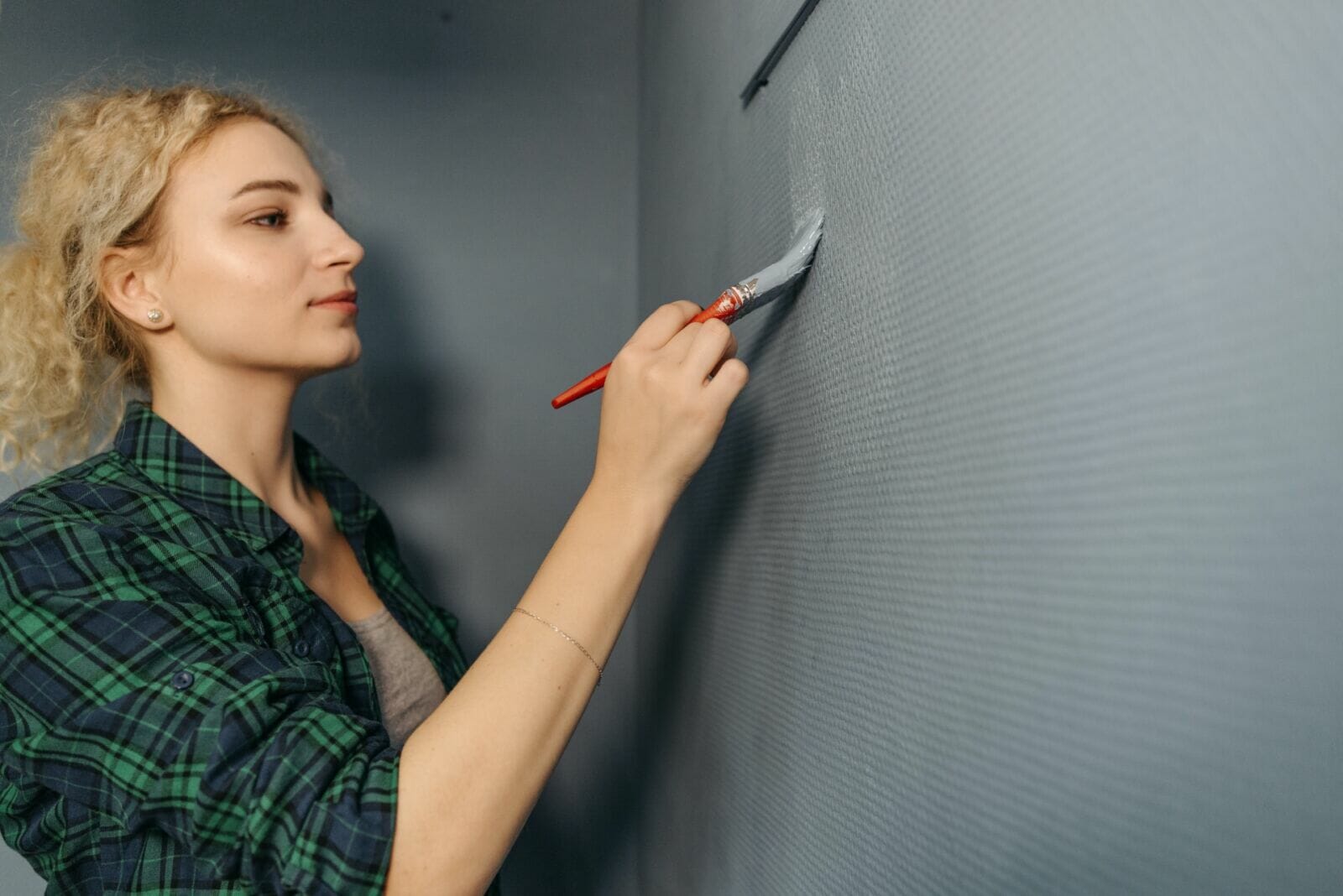If you’re looking for a way to add some interest and style to your home, consider creating an accent wall. Accent walls can be a great way to add color and personality to any room, and they are a relatively easy DIY project. Join us today as we provide tips for creating the perfect accent wall in your home. We will also introduce you to the color wheel to help pick accent colors that pop.
What Is an Accent Wall?
An accent wall is simply one wall in a room that is accentuated with a different color or material. This could mean painting one wall in a bold color, hanging wallpaper on one wall, or even tiling one wall. The accent wall is meant to be a focal point in the room and can help to add some dimension and interest.
Choosing Your Accent Wall
When choosing your accent wall, there are a few things to keep in mind. First, think about which wall will be the most visible or noticeable in the room. This is typically going to be the longest wall in the room. You also want to consider which wall will best complement your existing furniture and decor. Once you have chosen your accent wall, it’s time to start thinking about color.
The Color Wheel
When choosing a color for your accent wall, it can be helpful to consult the color wheel. A color wheel is a tool that helps to visually understand how colors relate to one another. There are three primary colors- red, yellow, and blue. These are the colors that cannot be created by mixing other colors and are located at equal intervals on the color wheel.
There are also three secondary colors- orange, green, and purple. These colors are created by mixing two primary colors and are located in between the corresponding primary Colors on the color wheel. For example, orange is located between red and yellow on the color wheel.
Then, there are six tertiary colors. These colors are created by mixing a primary and a secondary color and are located in between the corresponding primary and secondary colors on the color wheel. For example, red-orange is located between red and orange on the color wheel.
Using the color wheel can be helpful when choosing accent colors because you can see which colors are complementary or contrasting. Complementary colors are two colors that are located directly across from each other on the color wheel, such as blue and orange. Contrasting colors are two colors that are next to each other on the opposite sides of the primary Colors, such as yellow-green and red-purple.
Picking an Accent Color
Now that you understand the color wheel, it’s time to start thinking about which color you want to use for your accent wall. If you want your accent wall to stand out, choose a color that is complementary or contrasting to the other walls in the room. For example, if your walls are currently painted a light blue, you could choose an orange accent wall.
If you’re not sure which color to choose, consider using a neutral accent color like white or gray. You can then add pops of color to your furniture and decor. For example, you could use gray as your accent color and then add in some colorful blue curtains or artwork.
Creating Your Accent Wall
Once you’ve chosen your accent wall and picked out your paint color, it’s time to start painting! If you’re not confident in your painting abilities, you can always hire a professional painter to do the job for you.
If you decide to tackle the project yourself, there are a few things to keep in mind. First, be sure to use painter’s tape to tape off any areas that you don’t want to be painted, such as baseboards or trim. You’ll also want to use a drop cloth or tarp to protect your floor from paint spills.
When you’re ready to start painting, be sure to use a primer before applying your accent color. This will help the paint adhere better and will also make the color appear more vibrant. Once you’ve applied the primer, you can start painting your accent wall.
Wrapping Up: Adding Interest with Texture
Once your accent wall is painted, you can add interest and texture by hanging curtains or adding wallpaper. Wallpaper is a great way to add pattern and visual interest to any room. If you’re not a fan of wallpaper, consider hanging curtains on your accent wall. This will add color and texture without being too overwhelming.
These are just a few tips for creating the perfect accent wall in your home. With a little bit of planning and some elbow grease, you can easily transform any room in your home with an accent wall. So what are you waiting for? Get started today.




